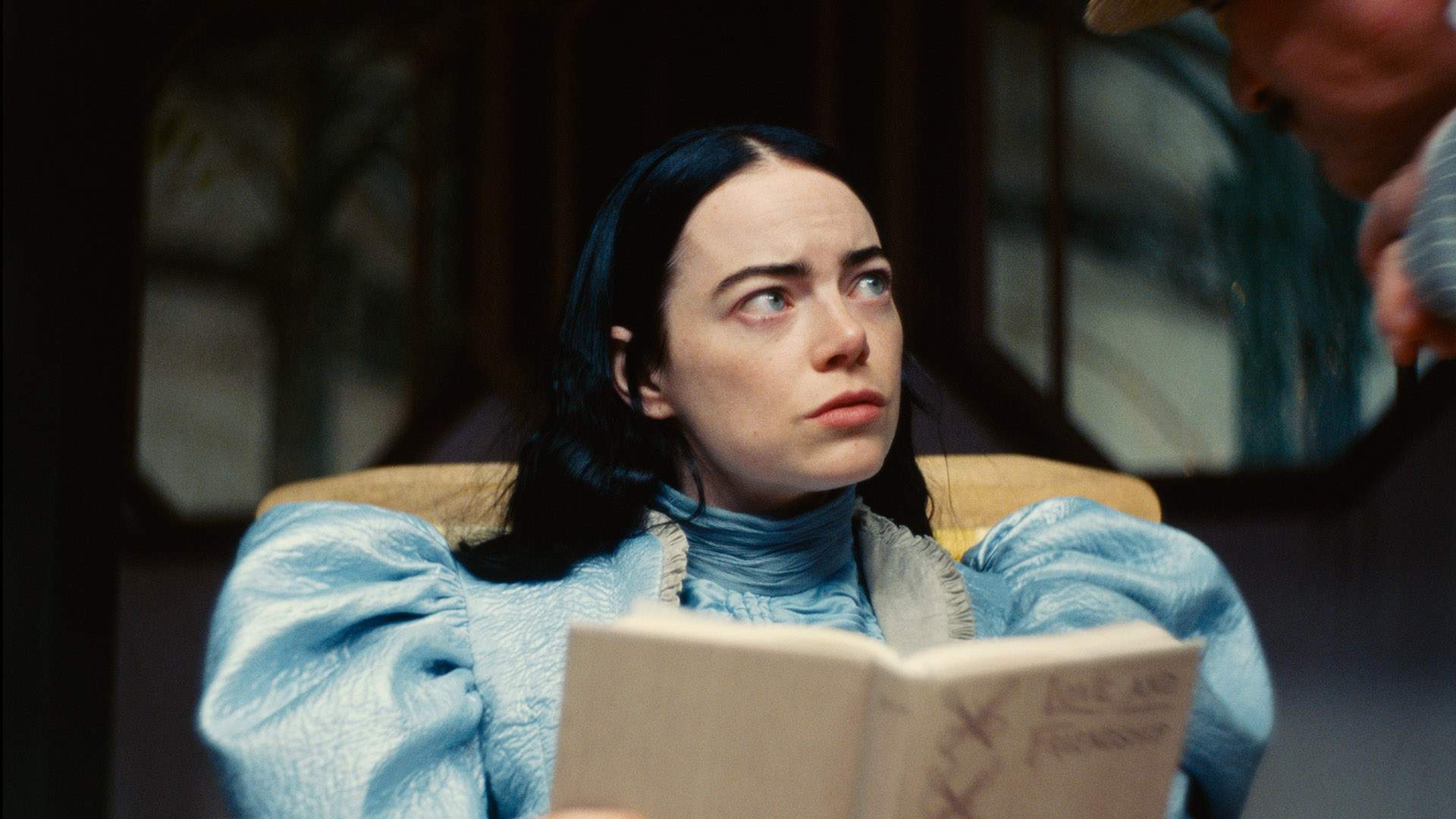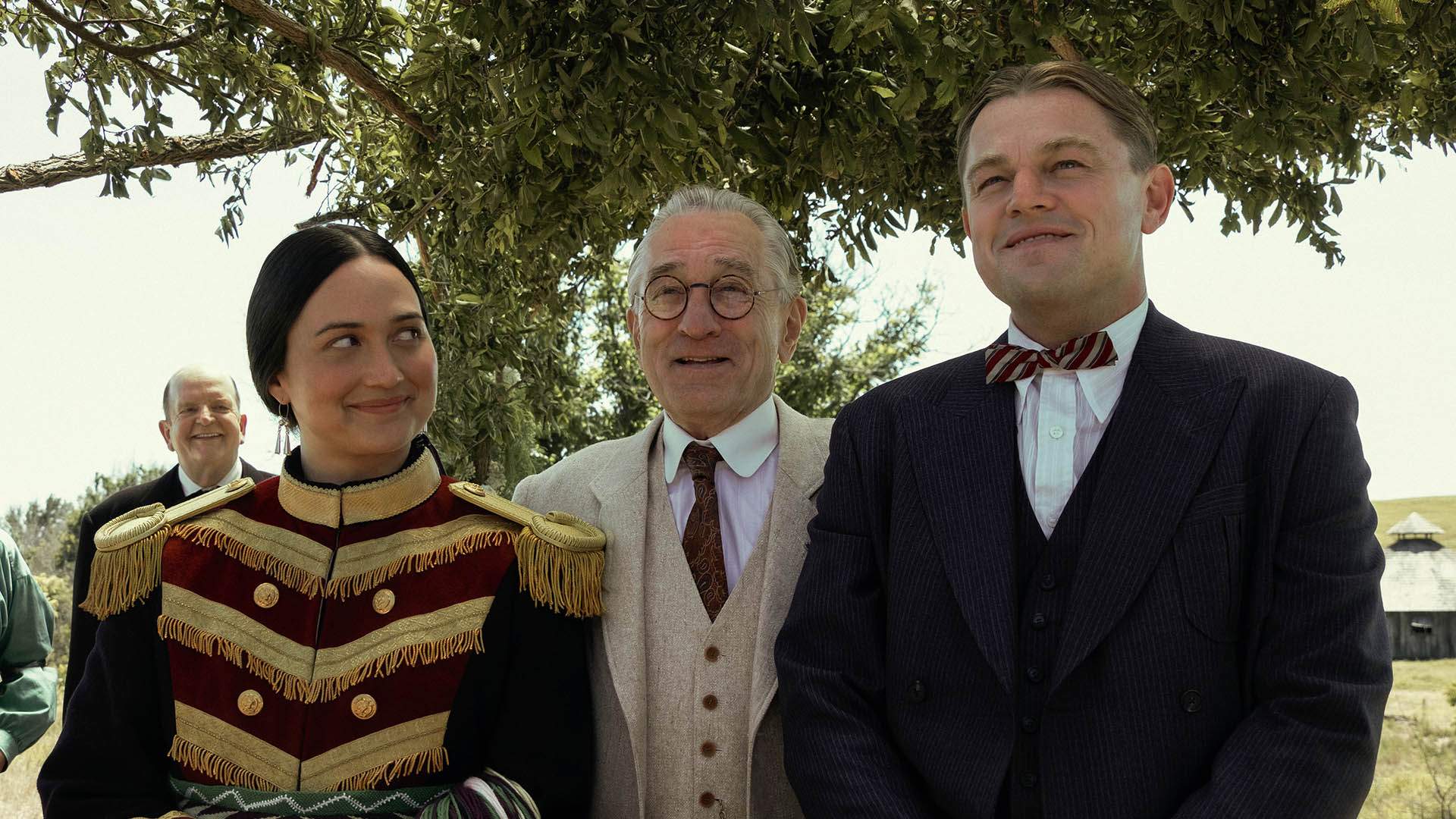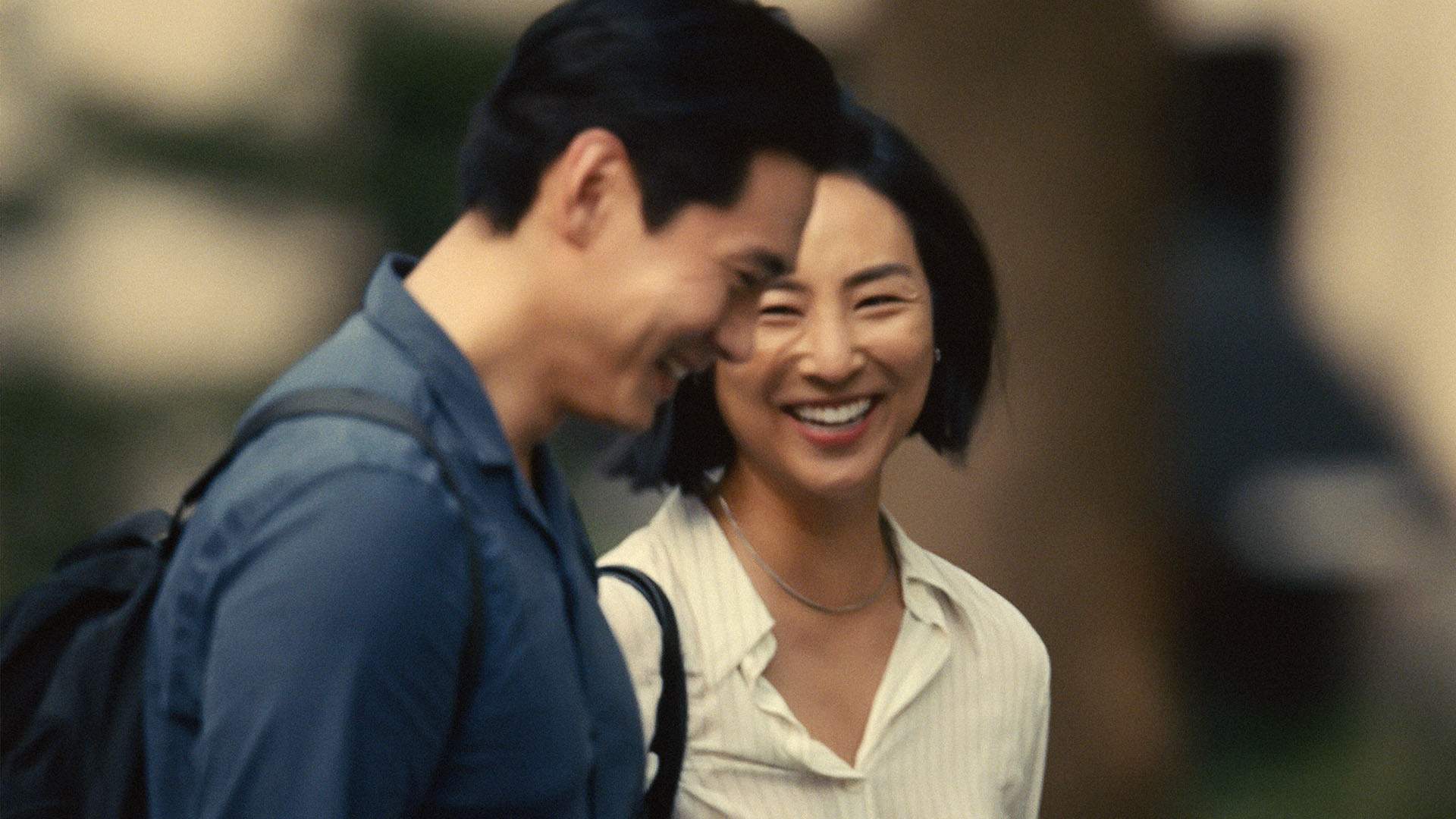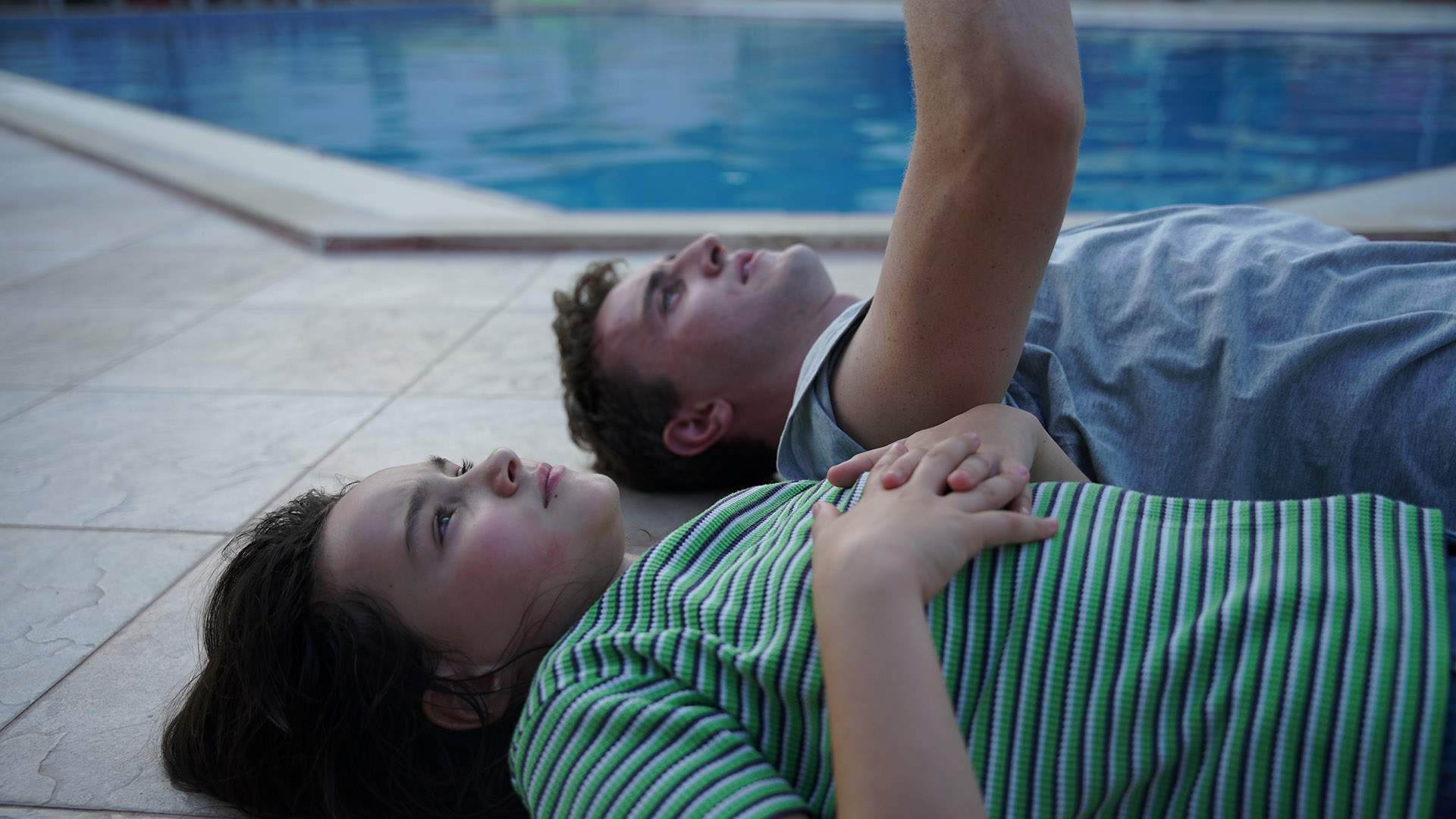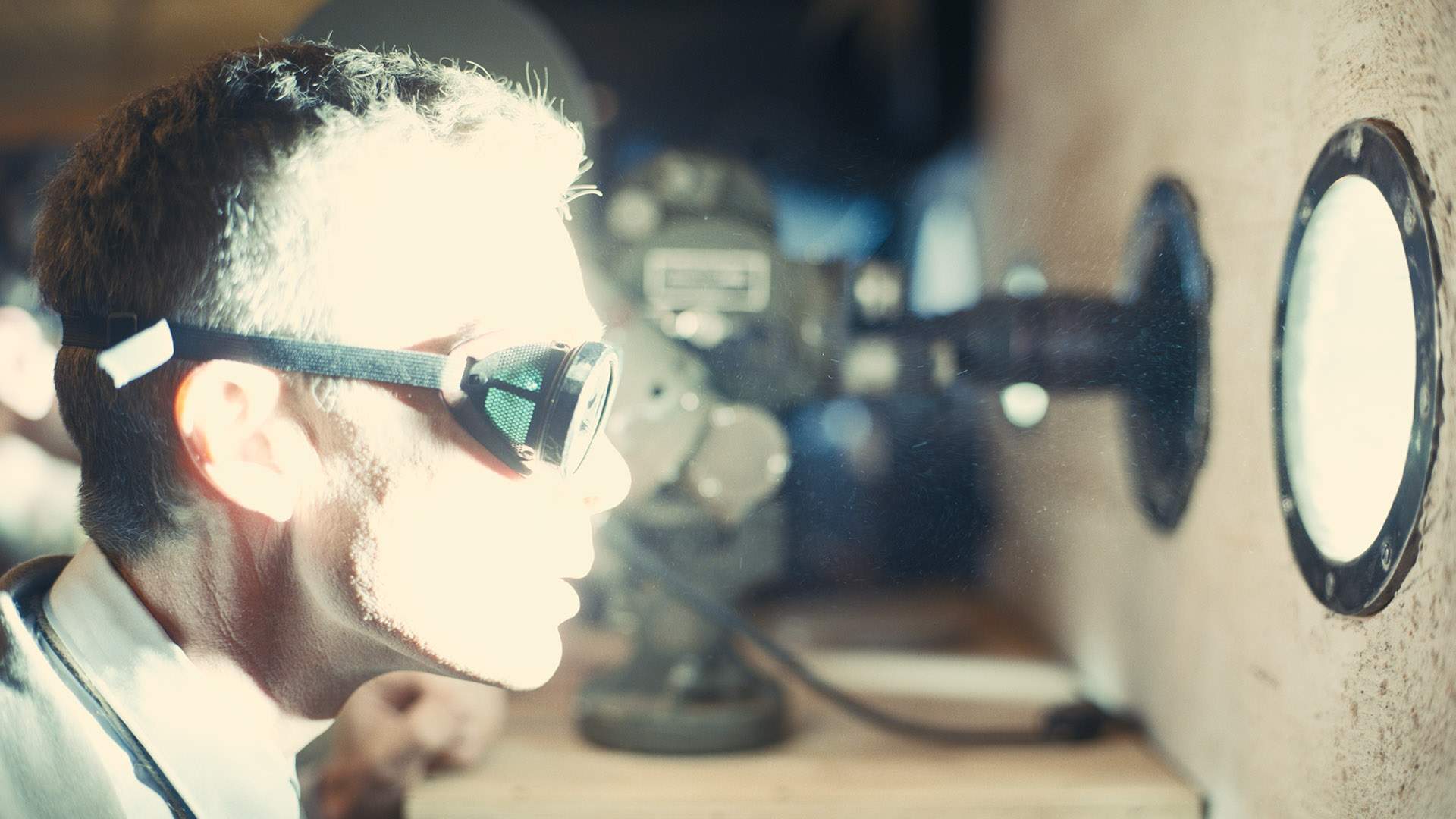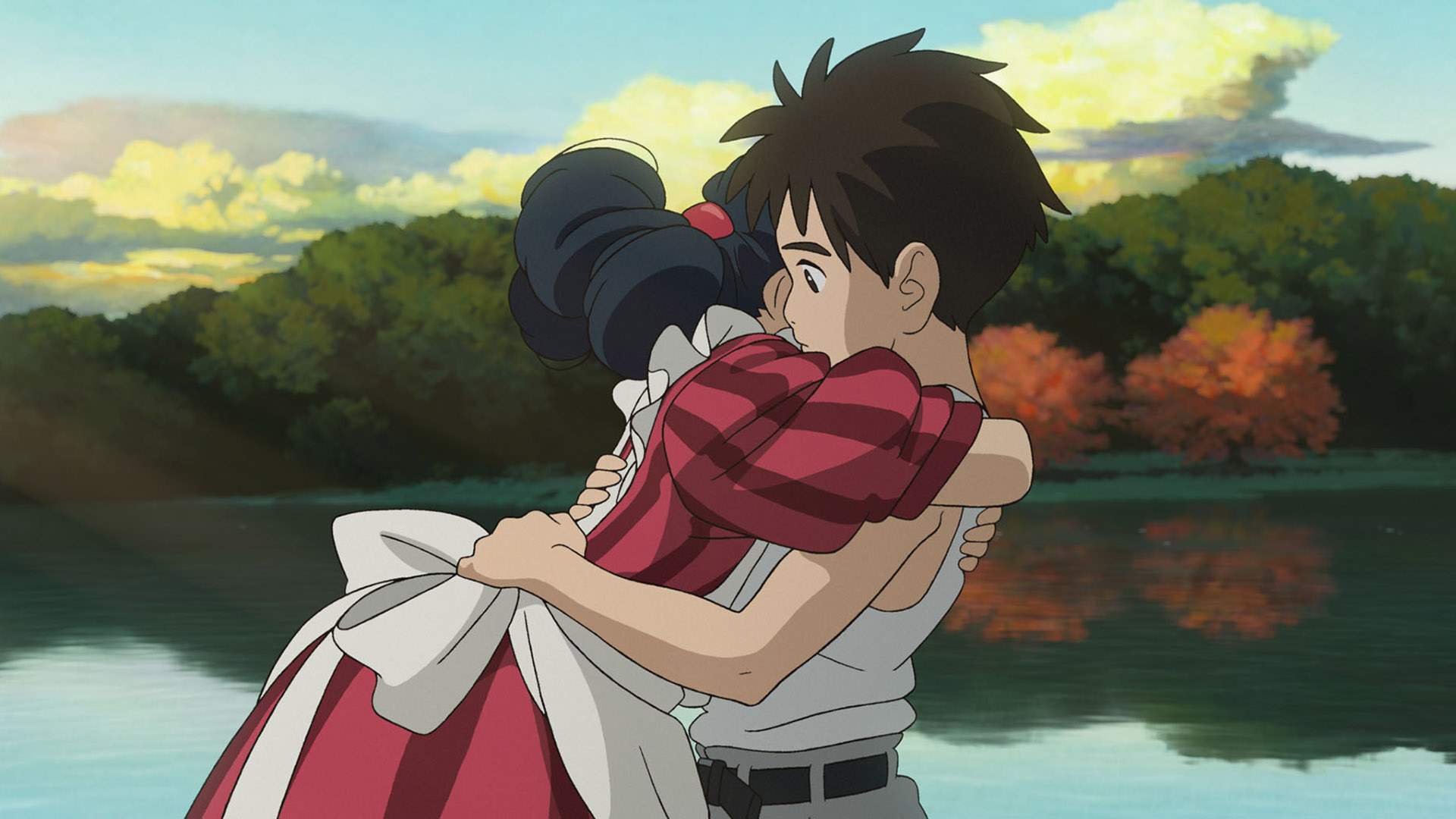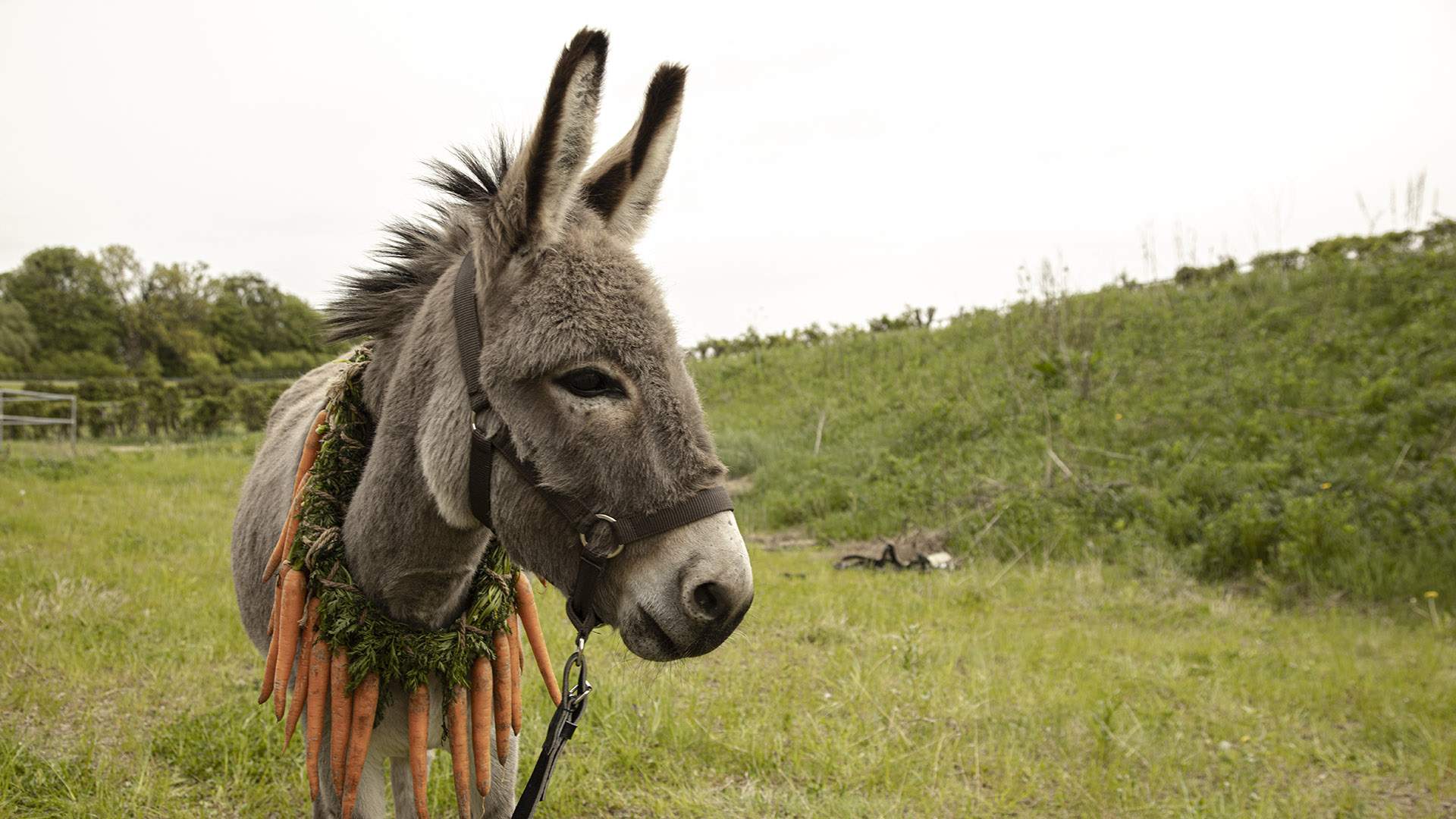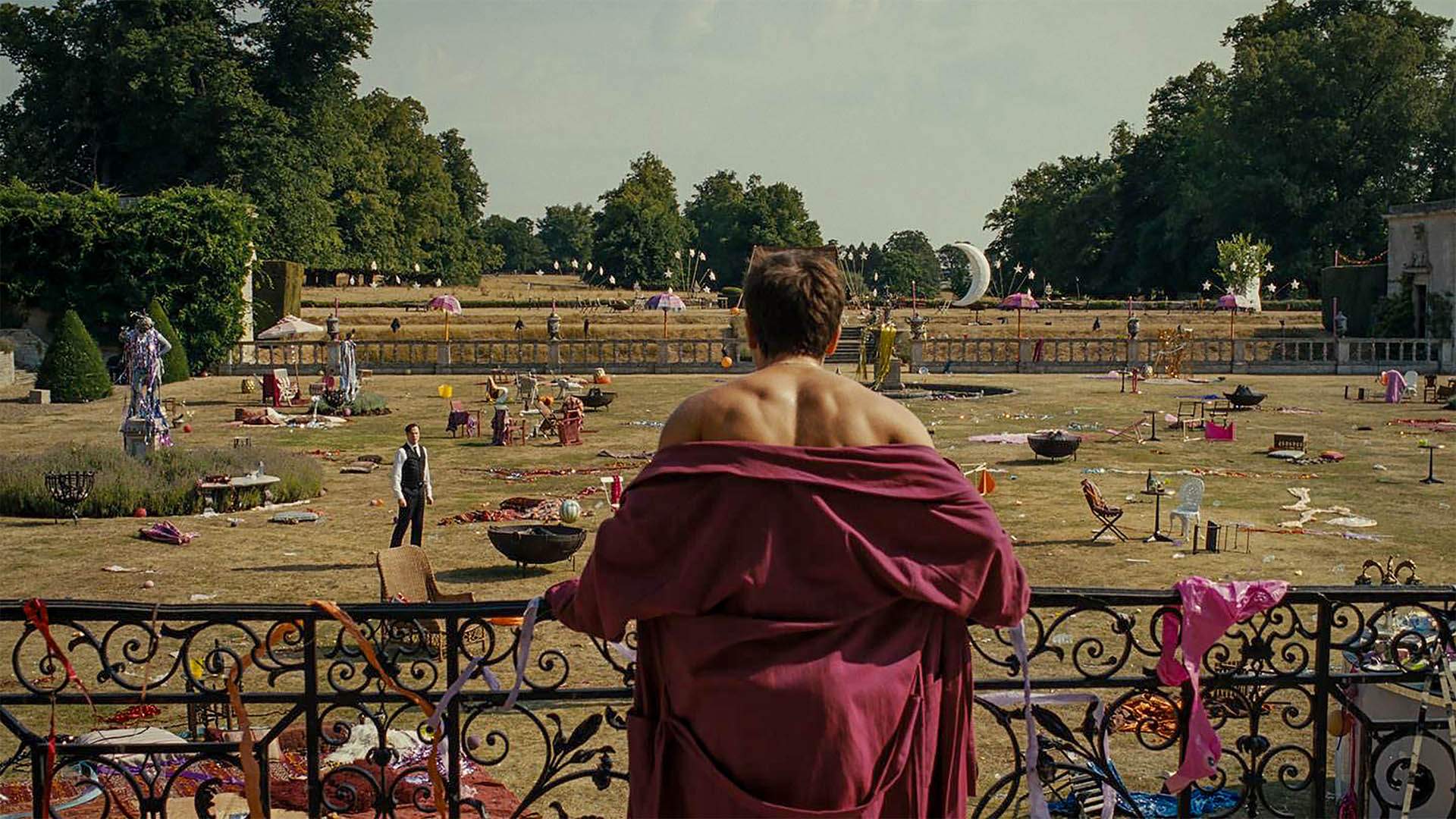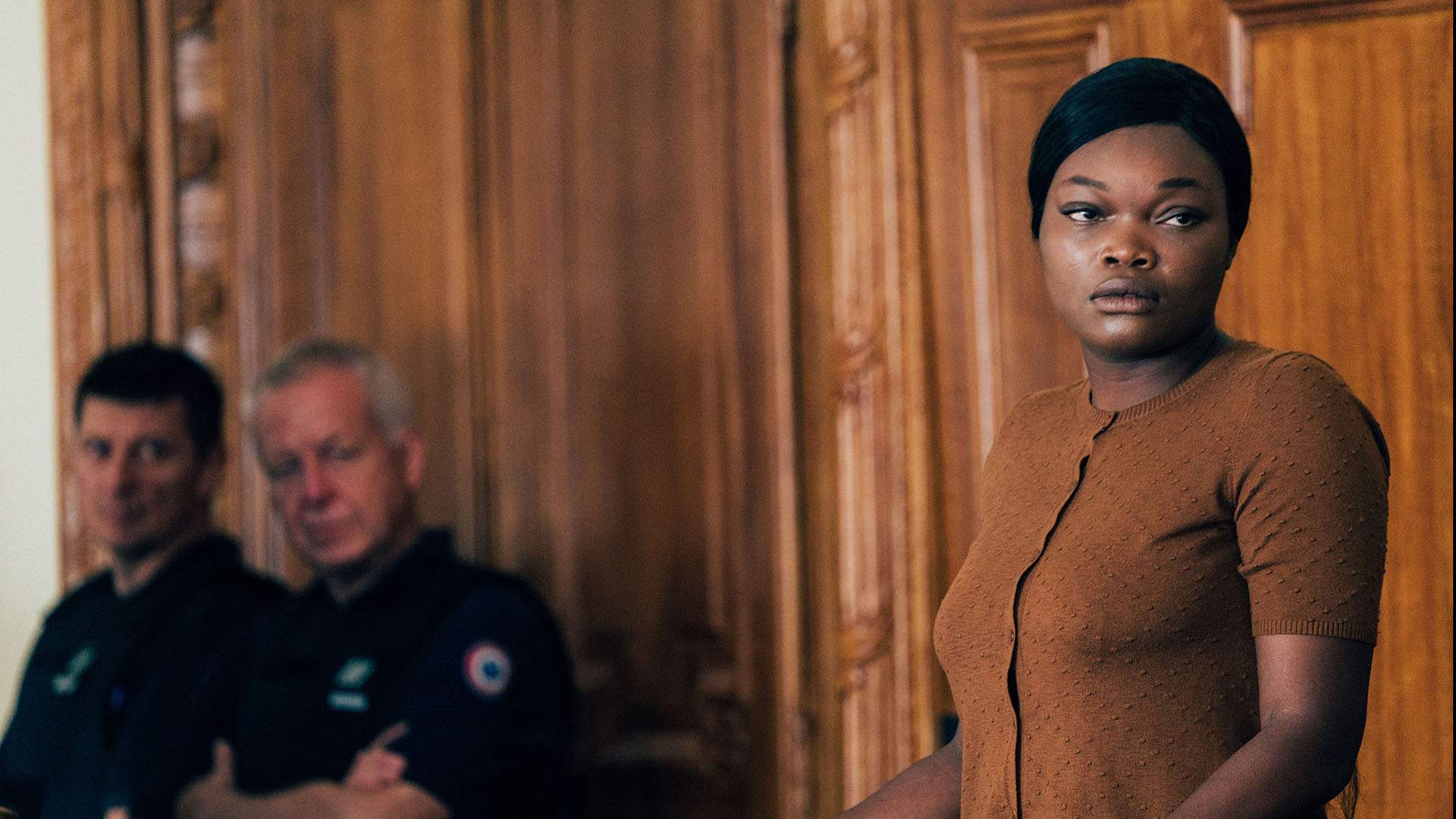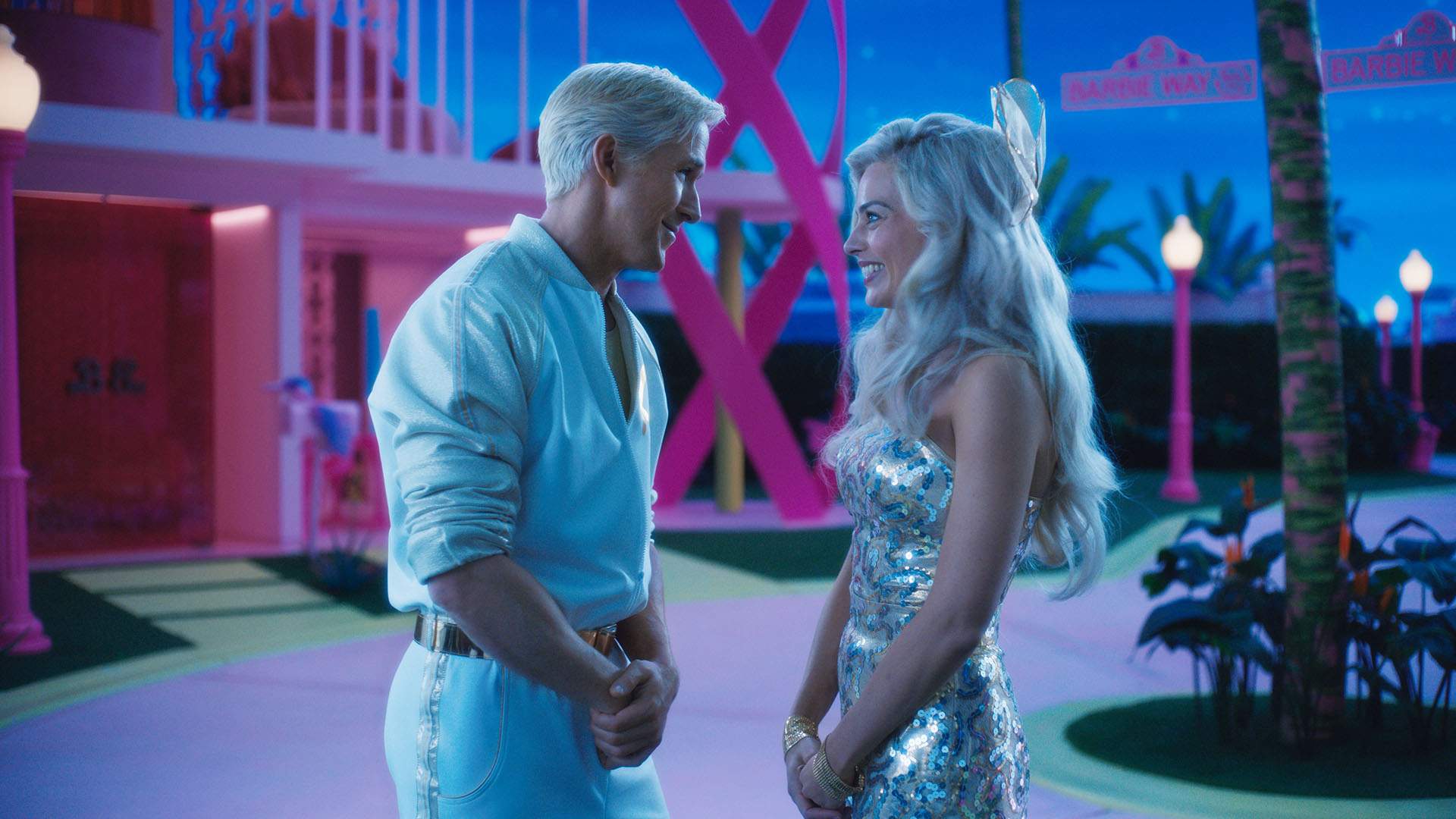The 15 Best Films of 2023
When 2023 hasn't served up electrifying takes on 'Frankenstein', plus both Martin Scorsese and Hayao Miyazaki's new masterpieces, it's been swooning over first loves and playing with dolls.
Whenever projectors have whirred in 2023, it has sometimes been thanks to seasoned filmmakers at the top of their games. Whenever silver screens have come alive with new sound-and-vision delights, it's sometimes been due to new voices making glorious debuts, too. Both are hallmarks of an exceptional year at the movies, as the 15 best films of 2023 show — because when beloved greats are delivering the goods and the next generations are making instant masterpieces, the state of cinema as an artform is glowing.
The one caveat to the above, and a reminder that's worth repeating each and every year: thanks to the hundreds of titles that make their way to picture palaces across each annual calendar, there's no such thing as a bad 12 months of films. Still, each year's crop is boasts its own wonders, surprises and thrills — and 2023 was no different.
Not all movies can be stunners, of course, but this year brought electrifying takes on Frankenstein, plus both Martin Scorsese and Hayao Miyazaki's new masterpieces, swooning love stories, blasts into the past, haunting documentaries and pink-hued playtimes our way. They're all among our 15 best films of 2023 — and most unforgettable — complete with excellent company.

POOR THINGS
Richly striking feats of cinema by Yorgos Lanthimos aren't scarce. Sublime performances by Emma Stone are hardly infrequent. Screen takes on Mary Shelley's Frankenstein couldn't be more constant. For Lanthimos, see: Dogtooth and Alps in the Greek Weird Wave filmmaker's native language, plus The Lobster, The Killing of a Sacred Deer and The Favourite since he started helming movies in English. With Stone, examples abound in her Best Actress Oscar for La La Land, supporting nominations before and after for Birdman or (The Unexpected Virtue of Ignorance) and Lanthimos' aforementioned regal satire, and twin 2024 Golden Globe nods for their latest collaboration as well as TV's The Curse. And as for the best gothic-horror story there is, not to mention one of the most influential sci-fi stories ever, the evidence is everywhere from traditional adaptations to debts owed as widely as The Rocky Horror Show and M3GAN. Combining the three results in a rarity, however: a jewel of a pastel-, jewel- and bodily fluid-toned feminist Frankenstein-esque fairy tale that's a stunning creation, as zapped to life with Lanthimos' inimitable flair, a mischievous air, Stone at her most extraordinary and empowerment blazing like a lightning bolt.
With cascading black hair, an inquisitive stare, incessant frankness and jolting physical mannerisms, Poor Things' star is Bella Baxter in this adaptation of Alasdair Grey's award-winning 1992 novel by Australian screenwriter Tony McNamara (The Great). Among the reasons that the movie and its lead portrayal are so singular: as a character with a woman's body revived with a baby's brain, Stone plays someone from infancy to adulthood, all with the astonishingly exact mindset and mannerisms to match, and while making every move, choice and feeling as organic as birth, living and death. In this fantastical steampunk vision of Victorian-era Europe, London-based Scottish doctor Godwin Baxter (Willem Dafoe, Asteroid City) is Bella's maker. Even if she didn't call him God, he's been playing it. But curiosity, the quest for agency and independence, horniness and a lust for adventure all beckon his creation on a radical, rebellious, gorgeously rendered, gloriously funny and generously insightful odyssey. So, Godwin tries to marry Bella off to medical student Max McCandles (Ramy Youssef, Ramy), only for her to discover masturbation and sex, and run off to the continent with caddish lawyer Duncan Wedderburn (Mark Ruffalo, She-Hulk: Attorney at Law).
Read our full review.

KILLERS OF THE FLOWER MOON
Death comes to Killers of the Flower Moon quickly. Death comes to Killers of the Flower Moon often. While Martin Scorsese will later briefly fill the film's frames with a fiery orange vision — with what almost appears to be a lake of flames deep in oil country, as dotted with silhouettes of men — death blazes through his 26th feature from the moment that the picture starts rolling. Adapted from journalist David Grann's 2017 non-fiction novel Killers of the Flower Moon: The Osage Murders and the Birth of the FBI, with the filmmaker himself and Dune's Eric Roth penning the screenplay, this is a masterpiece of a movie about a heartbreakingly horrible spate of deaths sparked by pure and unapologetic greed and persecution a century back. Scorsese's two favourite actors in Leonardo DiCaprio (Don't Look Up) and Robert De Niro (Amsterdam) are its stars, alongside hopefully his next go-to in Lily Gladstone (Reservation Dogs), but murder and genocide are as much at this bold and brilliant, epic yet intimate, ambitious and absorbing film's centre — all in a tale that's devastatingly true.
As Mollie Kyle, a member of the Osage Nation in Grey Horse, Oklahoma, incomparable Certain Women standout Gladstone talks through some of the movie's homicides early. Before her character meets DiCaprio's World War I veteran Ernest Burkhart — nephew to De Niro's cattle rancher and self-proclaimed 'king of the Osage' William King Hale — she notes that several Indigenous Americans that have been killed, with Mollie mentioning a mere few to meet untimely ends. There's nothing easy about this list, nor is there meant to be. Some are found dead, others seen laid out for their eternal rest, and each one delivers a difficult image. But a gun fired at a young mother pushing a pram inspires a shock befitting a horror film. The genre fits here, in its way, as do many others as Killers of the Flower Moon follows Burkhart's arrival in town, his deeds under his uncle's guidance, his romance with Mollie and the tragedies that keep springing: American crime saga, aka the realm that Scorsese has virtually made his own, as well as romance, relationship drama, western, true crime and crime procedural.
Read our full review, and our interview with Martin Scorsese.

PAST LIVES
Call it fate, call it destiny, call it deeply feeling like you were always meant to cross paths with someone: in Korean, that sensation is in-yeon. Partway through Past Lives, aspiring writer Nora (Greta Lee, Russian Doll) explains the concept to fellow scribe Arthur (John Magaro, Showing Up) like she knows it deep in her bones, because both she and the audience are well-aware that she does. That's what writer/director Celine Song's sublime feature debut is about from its first frames to its last. With Arthur, Nora jokes that in-yeon is something that Koreans talk about when they're trying to seduce someone. There's truth to her words, because she'll end up married to him. But with her childhood crush Hae Sung (Teo Yoo, Decision to Leave), who she last saw at the age of 12 because her family then moved from Seoul to Toronto, in-yeon explains everything. It sums up their firm connection as kids, the instant spark that ignites when they reunite in their 20s via emails and Skype calls, and the complicated emotions that swell when they're finally in the same place together again after decades — even with Arthur in the picture as well.
Song also emigrated to Canada with her parents as a pre-teen, but achieves that always-sought-after feat: making a movie that feels so intimately specific to its characters, and yet resonates so heartily and universally. Each time that Nora and Hae Sung slide back into each other's lives, it feels like no time has passed, but that doesn't smooth their way forward. Crafted to resemble slipping into a memory, complete with lingering looks and a transportingly evocative score, this feature knows every emotion that arises when you need someone and vice versa, but life has other plans. It feels the weight of the roads not taken, even when you're happy with the route you're on. It's a film about details — spying them everywhere, in Nora and Hae Sung's lives and their faces, while recognising how the best people in anyone's orbits spot them as well. Lee, Yoo and Magaro are each magnetic and magnificent, as is everything about this sensitive, blisteringly honest and intimately complex masterpiece. And, in one specific shot, waiting for a car has never felt so loaded and conflicted.
Read our full review, and our interview with Celine Song.

AFTERSUN
The simplest things in life can be the most revealing, whether it's a question asked of a father by a child, an exercise routine obeyed almost mindlessly or a man stopping to smoke someone else's old cigarette while wandering through a holiday town alone at night. The astonishing feature debut by Scottish writer/director Charlotte Wells, Aftersun is about the simple things. Following the about-to-turn-31 Calum (Paul Mescal, Foe) and his daughter Sophie (debutant Frankie Corio) on vacation in Turkey in the late 90s, it includes all of the above simple things, plus more. It tracks, then, that this coming-of-age story on three levels — of an 11-year-old flirting with adolescence, a dad struggling with his place in the world, and an adult woman with her own wife and family grappling with a life-changing experience from her childhood — is always a movie of deep, devastating and revealing complexity. Earning the internet's Normal People-starring boyfriend a Best Actor Oscar nomination, and deservedly so, Aftersun is a reflective, ruminative portrait of heartbreak. It's a quest to find meaning in sorrow and pain, too, and in processing the past.
Wells has crafted a chronicle of interrogating, contextualising, reframing and dwelling in memories; an examination of leaving and belonging; and an unpacking of the complicated truths that a kid can't see about a parent until they're old enough to be that parent. Breaking up Calum and Sophie's sun-dappled coastal holiday with the older Sophie (Celia Rowlson-Hall, Vox Lux) watching camcorder footage from the trip, sifting through her recollections and dancing it out under a nightclub's strobing lights in her imagination, this is also a stunning realisation that we'll always read everything we can into a loved one's actions with the benefit of hindsight, but all we ever truly have is the sensation that lingers in our hearts and heads. Understanding why the adult Sophie is scouring VHS tapes and her mind's eye for far more than mere nostalgia involves doing what everyone on a resort getaway does: hanging out. Aftersun spends much of its time in the simple holiday moments, including by the pool, at dinner, singing karaoke, day tripping, and in Sophie and Calum's room — and lets these ordinary, everyday occurrences, and the details that flow from them, confess everything they can.
Read our full review, and our interview with Charlotte Wells.

OPPENHEIMER
Cast Cillian Murphy and a filmmaker falls in love. Danny Boyle did with 28 Days Later and Sunshine, then Christopher Nolan followed with Batman Begins, The Dark Knight, The Dark Knight Rises, Inception and Dunkirk. There's an arresting, haunting, seeps-under-your-skin soulfulness about the Irish actor, never more so than when he was wandering solo through the empty zombie-ravaged streets in his big-screen big break, then hurtling towards the sun in an underrated sci-fi gem, both for Boyle, and now playing "the father of atomic bomb" in Nolan's epic biopic Oppenheimer. Flirting with the end of the world, or just one person's end, clearly suits Murphy. Here he is in a mind-blower as the destroyer of worlds — almost, perhaps actually — and so much of this can't-look-away three-hour stunner dwells in his expressive eyes. As J Robert Oppenheimer, those peepers see purpose and possibility. They spot quantum mechanics' promise, and the whole universe lurking within that branch of physics. They ultimately spy the consequences, too, of bringing the Manhattan Project successfully to fruition during World War II.
Dr Strangelove's full title could never apply to Oppenheimer, nor to its eponymous figure; neither learn to stop worrying and love the bomb. The theoretical physicist responsible for the creation of nuclear weapons did enjoy building it in Nolan's account, Murphy's telltale eyes gleaming as Oppy watches research become reality — but then darkening as he gleans what that reality means. Directing, writing and adapting the 2005 biography American Prometheus: The Triumph and Tragedy of J Robert Oppenheimer by Kai Bird and Martin J Sherwin, Nolan charts the before and after. He probes the fission and fusion of the situation in intercut parts, the first in colour, the second in black and white. In the former, all paths lead to the history-changing Trinity test on July 16, 1945 in the New Mexico desert. In the latter, a mushroom cloud balloons through Oppenheimer's life as he perceives what the gadget, as it's called in its development stages, has unleashed.
Read our full review.

EO
David Attenborough's nature documentaries are acclaimed and beloved viewing, including when they're recreating dinosaurs. Family-friendly fare adores cute critters, especially if they're talking as in The Lion King and Paddington movies. The horror genre also loves pushing animals to the front, with The Birds and Jaws among its unsettling masterpieces. Earth's creatures great and small are all around us on-screen, and also off — but in EO, a donkey drama by Polish filmmaker Jerzy Skolimowski (11 Minutes), humanity barely cares. The people in this Oscar-nominated mule musing might watch movies about pets and beasts. They may have actively shared parts of their own lives existence the animal kingdom; some, albeit only a rare few, do attempt exactly that with this flick's grey-haired, white-spotted, wide-eyed namesake. But one of the tragedies at the heart of this adventure is also just a plain fact of life on this pale blue dot while homo sapiens reign supreme: that animals are everywhere all the time but hardly anyone notices.
EO notices. Making his first film in seven years, and co-writing with his wife and producer Ewa Piaskowska (Essential Killing), Skolimowski demands that his audience pays attention. This is both an episodic slice-of-life portrait of EO the donkey's days and a glimpse of the world from his perspective — sometimes, the glowing and gorgeous cinematography by Michal Dymek (Wolf) takes in the Sardinian creature in all his braying, trotting, carrot-eating glory; sometimes, it takes on 'donkey vision', which is just as mesmerising to look at. Skolimowski gets inspiration from Robert Bresson's 1966 feature Au Hasard Balthazar, too, a movie that also follows the life of a hoofed, long-eared mammal. Like that French great, EO sees hardship much too often for its titular creature; however, even at its most heartbreaking, it also spies an innate, immutable circle of life.
Read our full review.

CLOSE
When Léo (debutant Eden Dambrine) and Rémi (fellow first-timer Gustav De Waele) dash the carefree dash of youth in Close's early moments, rushing from a dark bunker out into the sunshine — from rocks and forest to a bloom-filled field ablaze with colour, too — this immediately evocative Belgian drama runs joyously with them. Girl writer/director Lukas Dhont starts his sophomore feature with a tremendous moment, one that's arresting to look at and to experience. The petals pop; the camera tracks, rushes and flies; the two 13-year-olds are as exuberant and at ease as they're ever likely to be in their lives. They're sprinting because they're happy and playing, and because summer in their village — and on Léo's parents' flower farm — is theirs for the revelling in. They don't and can't realise it because no kid does, but they're also bolting from the bliss that is their visibly contented childhood to the tussles and emotions of being a teenager.
Close's title does indeed apply to its two main figures; when it comes to adolescent friendships, they couldn't be tighter. As expressed in revelatory performances by Dambrine and De Waele, each of whom are genuine acting discoveries — Dhont spotted the former on a train from Antwerp to Ghent — these boys have an innocent intimate affinity closer than blood. They're euphoric with and in each other's company, and the feature plays like that's how it has always been between the two. They've also never queried or overthought what their connection means. Before high school commences, Close shows the slumber parties, and the shared hopes and dreams. It sits in on family dinners, demonstrating the ease with which each is a part of the other's broader lives amid both sets of mums and dads; Léo's are Nathalie (Léa Drucker, Custody) and Yves (Marc Weiss, Esprits de famille), Rémi's are Sophie (Émilie Dequenne, An Ordinary Man) and Peter (Kevin Janssens, Two Summers). The film adores their rapport like a summer day adores the breeze, and conveys it meticulously and movingly. Then, when girls in Léo and Rémi's grade ask if the two are a couple, it shows the heartache and heartbreak of a boyhood bond dissolving.
Read our full review.

ALL THE BEAUTY AND THE BLOODSHED
With photographer Nan Goldin at its centre, the latest documentary by Citizenfour Oscar-winner Laura Poitras is a film about many things, to deeply stunning and moving effect. In this Oscar-nominated movie's compilation of Goldin's acclaimed snaps, archival footage, current interviews, and past and present activism, a world of stories flicker — all linked to Goldin, but all also linking universally. The artist's bold work, especially chronicling LGBTQIA+ subcultures and the 80s HIV/AIDS crisis, frequently and naturally gets the spotlight. Her complicated family history, which spans heartbreaking loss, haunts the doco as it haunts its subject. The rollercoaster ride that Goldin's life has taken, including in forging her career, supporting her photos, understanding who she is and navigating an array of personal relationships, cascades through, too. And, so do her efforts to counter the opioid epidemic by bringing one of the forces behind it to public justice.
Revealing state secrets doesn't sit at the core of the tale here, unlike Citizenfour and Poitras' 2016 film Risk — one about Edward Snowden, the other Julian Assange — but everything leads to the documentary's titular six words: All the Beauty and the Bloodshed. They gain meaning in a report spied late about the mental health of Goldin's older sister Barbara, who committed suicide at the age of 18 when Goldin was 11, and who Goldin contends was just an "angry and sexual" young woman in the 60s with repressed parents. A psychiatrist uses the eponymous phrase to describe what Barbara sees and, tellingly, it could be used to do the same with anyone. All the Beauty and the Bloodshed is, in part, a rebuke of the idea that a teenager with desires and emotions is a problem, and also a statement that that's who we all are, just to varying levels of societal acceptance. The film is also a testament that, for better and for worse, all the beauty and the bloodshed we all witness and endure is what shapes us.
Read our full review.

THE BOY AND THE HERON
For much of the six years that a new Hayao Miyazaki movie has been on the way, little was known except that the legendary Japanese animator was breaking his retirement after 2013's The Wind Rises. But there was a tentative title: How Do You Live?. While that isn't the name that the film's English-language release sports, both the moniker — which remains in Japan — and the nebulousness otherwise help sum up the gorgeous and staggering The Boy and the Heron. They also apply to the Studio Ghibli's co-founder's filmography overall. When a director and screenwriter escapes into imaginative realms as much as Miyazaki does, thrusting young characters still defining who they are away from everything they know into strange and surreal worlds, they ask how people exist, weather the chaos and trauma that's whisked their way, and bounce between whatever normality they're lucky to cling to and life's relentless uncertainties and heartbreaks. Miyazaki has long pondered how to navigate the fact that so little while we breathe proves a constant, and gets The Boy and the Heron spirited away by the same train of thought while climbing a tower of deeply resonant feelings.
How Do You Live? is also a 1937 book by Genzaburo Yoshino, which Miyazaki was given by his mother as a child, and also earns a mention in his 12th feature. The Boy and the Heron isn't an adaptation; rather, it's a musing on that query that's the product of a great artist looking back at his life and achievements, plus his losses. The official blurb uses the term "semi-autobiographical fantasy", an elegant way to describe a movie that feels so authentic, and so tied to its creator, even though he can't have charted his current protagonist's exact path. Parts of the story are drawn from his youth, but it wouldn't likely surprise any Studio Ghibli fan if Miyazaki had magically had his Chihiro, Mei and Satsuki, or Howl moment, somehow living an adventure from Spirited Away, My Neighbour Totoro or Howl's Moving Castle. What definitely won't astonish anyone is that grappling with conjuring up these rich worlds and processing reality is far from simple, even for someone of Miyazaki's indisputable creative genius.
Read our full review.

SALTBURN
Sharp, savage and skewering, plus twisted in narrative and the incisive use of genre tropes alike: as a filmmaker, Emerald Fennell certainly has a type. With the Oscar-winning Promising Young Woman and now Saltburn, the Barbie and The Crown actor-turned-writer/director takes aim, blazes away giddily and blasts apart everything that she can. When she made a blisteringly memorable feature debut behind the lens — giving audiences one of 2021's's best Down Under releases, in fact, and deservingly earning a place among the Academy Awards' rare female Best Director nominees in the process — she honed in on the absolute worst that a patriarchal society affords women. Now, after also pointing out the protection provided to the wealthy in that first effort as a helmer, Fennell has class warfare so firmly in her gaze that Saltburn is named after a sprawling English manor. With both flicks, the end result is daringly unforgettable. This pair of pictures would make a killer double, too, although they enjoy neighbouring estates rather than frolic across the same exact turf.
On her leaps from one side of the camera to the other, Fennell also keeps filling her features with such spectacular casts that other filmmakers might hope to fall into her good graces to bask in their glow — a fate that sits at the heart of Saltburn, albeit beyond the movie world. Fresh from nabbing his own Oscar nomination for The Banshees of Inisherin, Barry Keoghan adds yet another beguiling and astonishing performance to a resume that's virtually collecting them (see also: The Killing of a Sacred Deer, Dunkirk, American Animals, The Green Knight and Calm with Horses), proving mesmerisingly slippery as scholarship student Oliver Quick. Usually standing in his sights, Euphoria's Jacob Elordi perfects the part of Felix Catton, aka that effortlessly charismatic friend that everyone wishes they could spend all of their time with. And as Felix's mother Elspeth, father Sir James and "poor dear" family pal Pamela, Rosamund Pike (The Wheel of Time), Richard E Grant (Persuasion) and Carey Mulligan (Fennell's Promising Young Woman star, also an Academy Award nominee for her work) couldn't give more delicious line readings or portraits of the insular but shambolic well-to-do.
Read our full review.

BARBIE
No one plays with a Barbie too hard when the Mattel product is fresh out of the box. As that new doll smell lingers, and the toy's synthetic limbs gleam and locks glisten, so does a child's sense of wonder. The more that the world-famous mass-produced figurine is trotted through DreamHouses, slipped into convertibles and decked out in different outfits, though — then given non-standard makeovers — the more that playing with the plastic fashion model becomes fantastical. Like globally beloved item, like live-action movie bearing its name. Barbie, the film, starts with glowing aesthetic perfection. It's almost instantly a pink-hued paradise for the eyes, and it's also a cleverly funny flick from its 2001: A Space Odyssey-riffing outset. The longer that it continues, however, the harder and wilder that Lady Bird and Little Women director Greta Gerwig goes, as does her Babylon and Amsterdam star lead-slash-producer Margot Robbie as Barbie.
In Barbie's Barbie Land, life is utopian. Robbie's Stereotypical Barbie and her fellow dolls (including The Gray Man's Ryan Gosling as Stereotypical Ken) genuinely believe that their rosy beachside suburban excellence is infectious, too. And, they're certain that this female-championing realm — and the Barbies being female champions of all skills, talents and appearances — has changed the real world inhabited by humans. But there's a Weird Barbie living in a misshapen abode. While she isn't Barbie's villain, not for a second, her nonconformist look and attitude says everything about Barbie at its most delightful. Sporting cropped hair, a scribbled-on face and legs akimbo, she's brought to life by Saturday Night Live great Kate McKinnon having a blast, and explained as the outcome of a kid somewhere playing too eagerly. Meet Gerwig's spirit animal; when she lets Weird Barbie's vibe rain down like a shower of glitter, covering everything and everyone in sight both in Barbie Land and in reality, the always-intelligent, amusing and dazzling Barbie is at its brightest and most brilliant.
Read our full review, and Greta Gerwig, Margot Robbie, Issa Rae and America Ferrara chatting about the film.

SAINT OMER
In 2016, a French documentarian with Senegalese heritage attended the trial of a Senegalese French PhD student who confessed to killing her 15-month-old daughter, who was fathered by a white partner, by leaving her on the beach to the mercy of the waves at Berck-sur-Mer. The filmmaker was fixated. She describes it as an "unspeakable obsession". She was haunted by questions about motherhood, too — her mum's and her own, given that she was a young mother herself as she sat in the courtroom. That story is the story of how Saint Omer came to be, and also almost exactly the tale that the piercing drama tells. In her first narrative film after docos We and La Permanence, writer/director Alice Diop focuses on a French author and literature professor with a Senegalese background who bears witness to a trial with the same details, also of a Senegalese French woman, for the same crime. Saint Omer's protagonist shares other traits with Diop as she observes, too, and watches and listens to research a book.
A director riffing on their own experience isn't novel, but Saint Omer is strikingly intimate and authentic because it's the embodiment of empathy in an innately difficult situation. It shows what it means to feel for someone else, including someone who has admitted to a shocking crime, and has been made because Diop went through that far-from-straightforward process and was galvanised to keep grappling with it. What a deeply emotional movie this 2022 Venice International Film Festival Grand Jury Prize-winning feature is, understandably and unsurprisingly. What a heartbreaking and harrowing work it proves as well. Saint Omer is also an astoundingly multilayered excavation of being in a country but never being seen as truly part it, and what that does to someone's sense of self, all through Fabienne Kabou's complicated reality and Laurence Coly's (Guslagie Malanda, My Friend Victoria) fictionalised scenario.
Read our full review.

WOMEN TALKING
Get Rooney Mara, Claire Foy, Jessie Buckley, Frances McDormand and more exceptional women in a room, point a camera their way, let the talk flow: Sarah Polley's Women Talking does just that, and this year's Best Adapted Screenplay Oscar-winner is phenomenal. The actor-turned-filmmaker's fourth effort behind the lens after 2006's Away From Her, 2011's Take This Waltz and 2012's Stories We Tell does plenty more, but its basic setup is as straightforward as its title states. Adapted from Miriam Toews' 2018 novel of the same name, this isn't a simple or easy film, however. That book and this feature draw on events in a Bolivian Mennonite colony from 2005–9, where a spate of mass druggings and rapes of women and girls were reported at the hands of some of the group's men. In a patriarchal faith and society, women talking about their experiences is a rebellious, revolutionary act anyway — and talking about what comes next is just as charged.
"The elders told us that it was the work of ghosts, or Satan, or that we were lying to get attention, or that it was an act of wild female imagination." That's teenage narrator Autje's (debutant Kate Hallett) explanation for how such assaults could occur and continue, as offered in Women Talking's sombre opening voiceover. Writing and helming, Polley declares her feature "an act of female imagination" as well, as Toews did on the page, but the truth in the movie's words is both lingering and haunting. While the film anchors its dramas in a specific year, 2010, it's purposefully vague on any details that could ground it in one place. Set within a community where modern technology is banned and horse-drawn buggies are the only form of transport, it's a work of fiction inspired by reality, rather than a recreation. Whether you're aware of the true tale behind the book going in or not, this deeply powerful and affecting picture speaks to how women have long been treated in a male-dominated world at large — and what's so often left unsaid, too.
Read our full review.

ASTEROID CITY
In 1954, one of Alfred Hitchcock's greatest thrillers peeked through a rear window. In Wes Anderson's highly stylised, symmetrical and colour-saturated vision of 1955 in Asteroid City, a romance springs almost solely through two fellow holes in the wall. Sitting behind one is actor Midge Campbell (Scarlett Johansson, Black Widow), who visibly recalls Marilyn Monroe. Peering through the opposing space is newly widowed war photographer Augie Steenbeck (Jason Schwartzman, Spider-Man: Across the Spider-Verse), who takes more than a few cues from James Dean. The time isn't just 1955 in the filmmaker's latest stellar masterpiece, but September that year, a month that would end with Dean's death in a car crash. Racing through the movie's eponymous setting — an 87-person slice of post-war midwest Americana with a landscape straight out of a western, the genre that was enjoying its golden age at the time — are cops and robbers speeding and careening in their vehicles.
Meticulousness layered upon meticulousness has gleamed like the sun across Anderson's repertoire since 1996's Bottle Rocket launched the writer/director's distinctive aesthetic flair; "Anderson-esque" has long become a term. Helming his 11th feature with Asteroid City, he's as fastidious and methodical in his details upon details as ever — more so, given that each successive movie keeps feeling like Anderson at his most Anderson — but all of those 50s pop-culture shoutouts aren't merely film-loving, winking-and-nodding quirks. Within this picture's world, as based on a story conjured up with Roman Coppola (The French Dispatch), Asteroid City isn't actually a picture. "It is an imaginary drama created expressly for the purposes of this broadcast. The characters are fictional, the text hypothetical, the events an apocryphal fabrication," a Playhouse 90-style host (Bryan Cranston, Better Call Saul) informs. So, it's a fake play turned into a play for a TV presentation, behind-the-scenes glimpses and all. There Anderson is, being his usual ornate and intricate self, and finding multiple manners to explore art, authenticity, and the emotions found in and processed through works of creativity.
Read our full review.

LIMBO
When Ivan Sen sent a police detective chasing a murdered girl and a missing woman in the Australian outback in 2013's Mystery Road and its 2016 sequel Goldstone, he saw the country's dusty, rust-hued expanse in sun-bleached and eye-scorching colour. In the process, the writer, director, co-producer, cinematographer, editor and composer used his first two Aussie noir films and their immaculately shot sights to call attention to how the nation treats people of colour — historically since its colonial days and still now well over two centuries later. Seven years after the last Jay Swan movie, following a period that's seen that character make the leap to the small screen in three television seasons, Sen is back with a disappearance, a cop, all that inimitable terrain and the crimes against its Indigenous inhabitants that nothing can hide. Amid evident similarities, there's a plethora of differences between the Mystery Road franchise and Limbo; however, one of its simplest is also one of its most glaring and powerful: shooting Australia's ochre-toned landscape in black and white.
Limbo's setting: Coober Pedy, the globally famous "opal capital of the world" that's known for its underground dwellings beneath the blazing South Australian earth, but reimagined as the fictional locale that shares the film's name — a place unmistakably sporting an otherworldly topography dotted by dugouts to avoid the baking heat, and that hasn't been able to overcome the murder of a local Indigenous girl two decades earlier. The title is symbolic several times over, including to the visiting Travis Hurley (Simon Baker, Blaze), whose first task upon arrival is checking into his subterranean hotel, rolling up his sleeves and indulging his heroin addiction. Later, he'll be told that he looks more like a drug dealer than a police officer — but, long before then, it's obvious that his line of work and the sorrows he surveys along the way have kept him hovering in a void. While he'll also unburden a few biographical details about mistakes made and regrets held before the film comes to an end, such as while talking to the missing Charlotte Hayes' brother Charlie (Rob Collins, The Drover's Wife The Legend of Molly Johnson) and sister Emma (Natasha Wanganeen, The Survival of Kindness), this tattooed cop with wings inked onto his back is already in limbo before he's literally in Limbo talking.
Read our full review, and our interview with Ivan Sen and Simon Baker.

Looking for more viewing highlights? We also rounded up another 15 exceptional flicks that hardly anyone saw in cinemas this year — plus the 15 best straight-to-streaming movies, 15 best new TV series of 2023, another 15 excellent new TV shows of 2023 that you might've missed and the 15 best returning shows as well.
And, we've kept a running list of must-stream TV from across the year, complete with full reviews.
Also, you can check out our regular rundown of film and TV streaming recommendations, which is updated monthly.t you might've missed.
